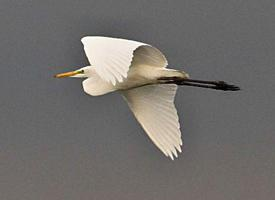
Popis zvířete
The Squacco Heron (Ardeola ralloides) is a captivating bird species belonging to the heron family, Ardeidae. This small to medium-sized bird is distinguished by its striking plumage, versatile feeding habits, and widespread distribution across various water-rich habitats. With a graceful stance and an adept ability to blend into its surroundings, the Squacco Heron embodies the delicate balance of wetland ecosystems.Physical Description:
The Squacco Heron measures approximately 44-47 cm in length, with a wingspan ranging from 80 to 92 cm. Its weight varies between 250 to 350 grams, showcasing a slender and compact body ideal for wading and hunting in shallow waters. During the breeding season, the bird dons a remarkable plumage; its back and wings are adorned with a rich, golden-buff color, complemented by a white underside. The head is crowned with a distinctive black cap, and the bill is long, pointed, and blue-grey, turning pink at the base during the breeding season. Non-breeding adults and juveniles exhibit a more subdued coloration, primarily grey and white, allowing them to blend seamlessly into their environment.
Habitat and Distribution:
The Squacco Heron has a broad geographical range, spanning across parts of Europe, Asia, and Africa. Its preferred habitats include freshwater marshes, rivers, lakes, and agricultural lands, particularly those with abundant vegetation that provides cover and nesting sites. The species is migratory, spending the breeding season in temperate and subtropical regions of Europe and Asia, and wintering in tropical Africa and parts of the Indian subcontinent.
Behavior and Diet:
The Squacco Heron is a versatile and opportunistic feeder, primarily consuming a diet of fish, amphibians, crustaceans, and insects. It employs a patient hunting strategy, often standing motionless or walking slowly through shallow waters to ambush its prey. The bird is also known to forage in fields and along the edges of water bodies, showcasing its adaptability to different feeding environments.
Reproduction:
Breeding typically occurs during the spring and early summer. The Squacco Heron is a colonial nester, often forming mixed breeding colonies with other heron species. Nests are constructed in dense vegetation near or over water, using reeds, sticks, and plant material. Females lay a clutch of 3-6 pale blue eggs, which are incubated by both parents for about 21-25 days. The chicks are altricial, requiring extensive care and feeding by the parents until they fledge at around 40-45 days of age.
Conservation Status:
The Squacco Heron is currently listed as Least Concern by the International Union for Conservation of Nature (IUCN), indicating that it does not face any immediate threats of extinction. However, habitat destruction, pollution, and climate change pose long-term risks to its populations. Conservation efforts focused on wetland preservation and restoration are crucial to ensuring the survival of this species and the myriad of other organisms that inhabit these ecosystems.
In conclusion, the Squacco Heron is a remarkable bird that thrives in the interstices of land and water. Its presence is a testament to the health of wetland ecosystems, making it an important species for biodiversity and a beautiful spectacle for birdwatchers and nature enthusiasts alike.
Podobná zvířata
Nové fotografie zvířat
Top 10 zvířat
- Dolphin gull (Leucophaeus scoresbii)
- Diana monkey (Cercopithecus diana)
- Moustached guenon (Cercopithecus cephus)
- Galápagos tortoise (Geochelone nigra complex)
- Japanese macaque (Macaca fuscata)
- Stone loach (Barbatula barbatula)
- Russian tortoise (Testudo horsfieldii)
- Greek tortoise (Testudo graeca)
- Common flying dragon (Draco volans)
- Vendace (Coregonus albula)


